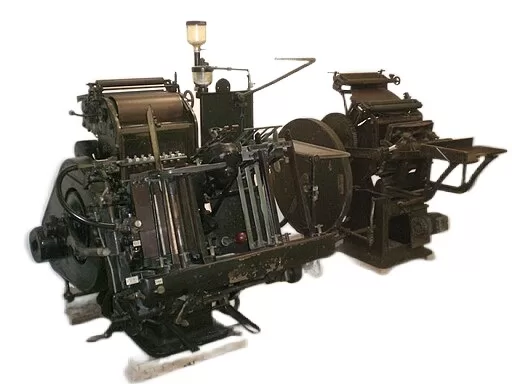This article is part of the FLEXO FLAW FIXING series
In the delicate art of flexo printing, each component of the press plays a crucial role in working in harmony to produce the perfect print. Among the many trials printers face, ink spitting is a common but manageable challenge that can disrupt the harmony in flexo printing, affecting the quality of the final product and the efficiency of production. In this article, we’ll take a closer look at the phenomenon, understand its causes, and explore the solutions available to mitigate its effects for a flawless print run.
Ink Spitting Effect and its Source
Ink spitting in flexo printing refers to the unintentional spraying or misting of ink during the printing process, resulting in unsightly spots or streaks on the substrate. Not only does this affect the visual appeal of the print, but it can also lead to material waste, increased downtime and, ultimately, additional costs. Controlling this problem is crucial to producing clean, sharp prints and maintaining the operational efficiency of a flexo press.
Root Causes and Remedies of Ink Spitting
To successfully tackle the challenge of ink spitting, it is necessary to look at the various causes and appropriate remedies:
Press Mechanics and Operation
Cause: Press speeds that are too high can lead to ink spitting.
Remedy: Balancing the need for productivity with quality is key. Slowing down the press speed can be a simple but effective step to minimise this problem. In addition, regular performance checks will ensure that the press is operating within the optimum speed range.
Ink Composition and Consistency
Cause: Inks that are too viscous or too sticky can behave unpredictably under pressure, leading to spitting.
Remedy: Keeping a close eye on ink consistency and adjusting the formulation if necessary can drastically reduce the risk. Using additives or conditioners to maintain proper ink flow will ensure that the ink transfers smoothly from the screen to the plate and onto the substrate.
Anilox and Plate Interaction
Cause: Selecting the correct anilox roll is essential to achieving the desired ink transfer. An inappropriate match can contribute to ink spitting, as can excessive pressure between the anilox and the plate.
Remedy: By carefully selecting an anilox roll with the appropriate line screen and volume, and ensuring that pressure settings are fine-tuned, printers can significantly reduce the incidence of ink spitting.
Doctor Blade Maintenance
Cause: Doctor blades must be in top condition to cleanly wipe excess ink from the screen rollers. Worn or damaged blades can allow too much ink to pass through, resulting in spitting.
Remedy: Blade inspection should be part of routine maintenance. Replacing them before they become a problem is a small step that can have a significant impact on preventing ink spitting.
Substrate Quality
Cause: The substrate can also be a contributing factor. Problems such as surface tension variations or contamination can lead to inconsistent ink transfer.
Remedy: Ensuring that the substrate is of high quality and suitable for the job at hand can help to eliminate this as a cause of ink spitting.
Technological Options
Advances in technology offer a number of solutions to combat ink spitting. For example, press manufacturers are continually improving press design to improve ink management. Software can assist in process optimisation, monitoring and automatic adjustment of the various parameters that lead to ink spitting. Keeping abreast of these innovations and integrating them can bring significant benefits.
Conclusion
Tackling the problem of ink-spitting in flexo printing is a multi-faceted endeavour that requires a combination of knowledge, proper maintenance and the application of technological advances. By understanding and addressing the causes, printers can significantly improve the quality of their output and the efficiency of their workflow. The quest for excellence in flexo printing is an ongoing one, and effective management of ink spitting is a crucial step along the way.



![[Flexo Flaw Fixing] Ink Mottling Mottled_Print](https://flexopedia.net/wp-content/uploads/2022/06/Mottled_Print-150x150.png)
![[Flexo Flaw Fixing] Vertical Streaks Longitudinal stripes in flexo printing](https://flexopedia.net/wp-content/uploads/2022/07/062_Longitude_Stripes-jpeg-e1703168839289.webp)
